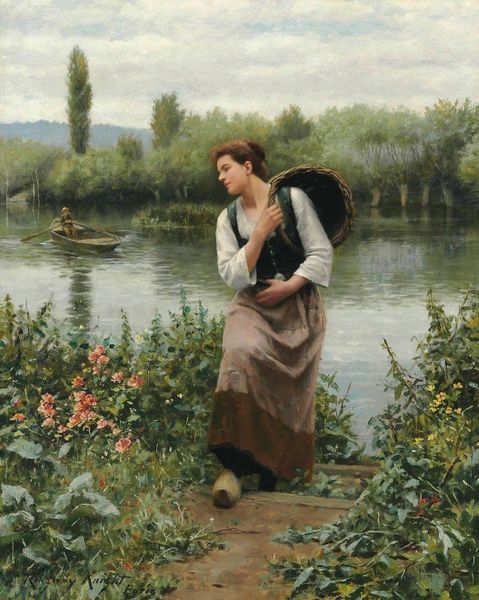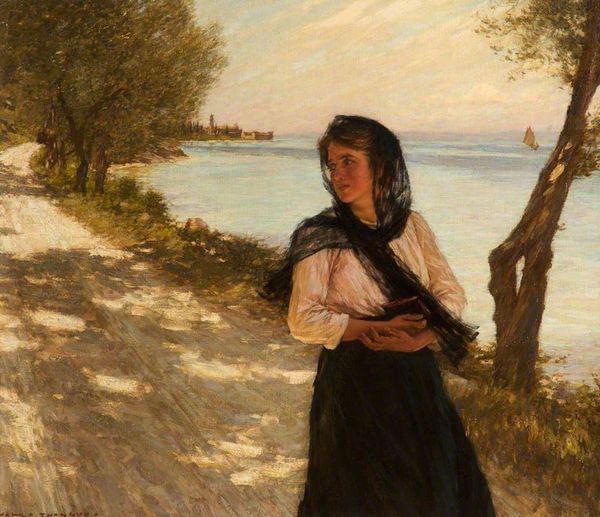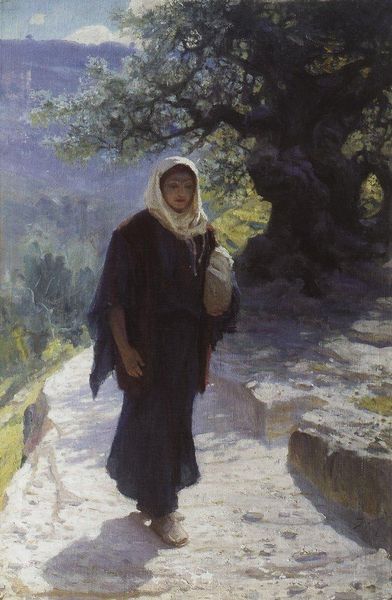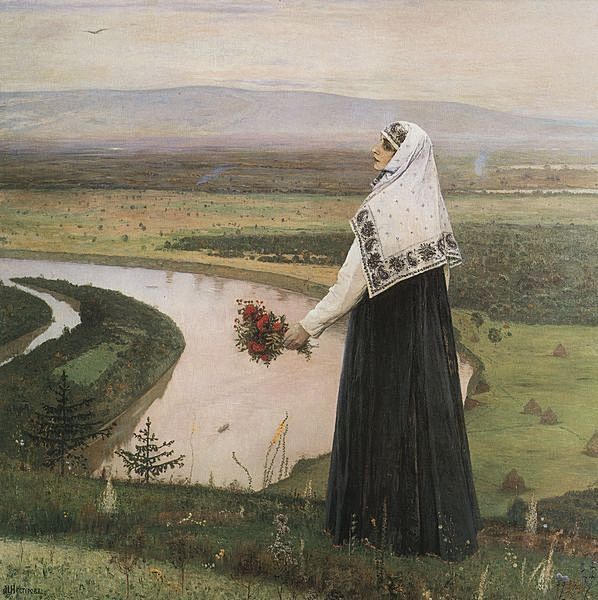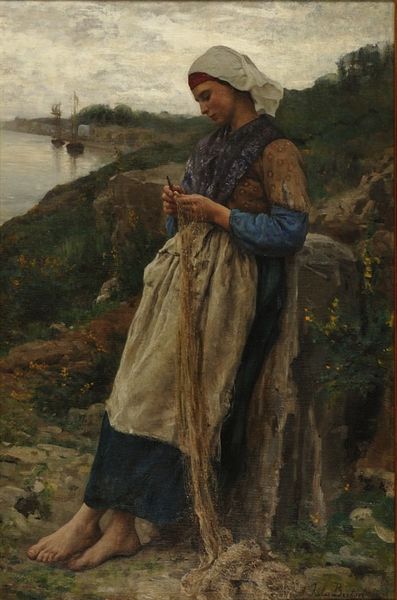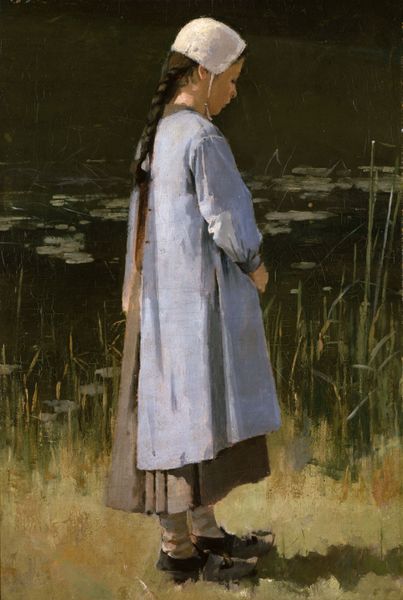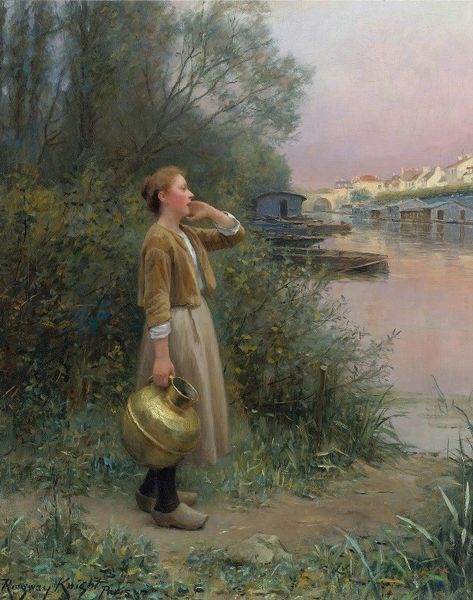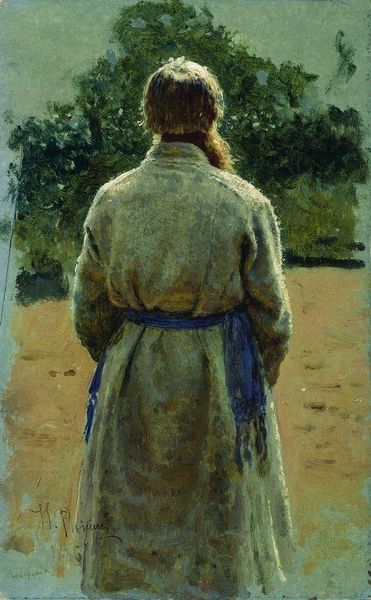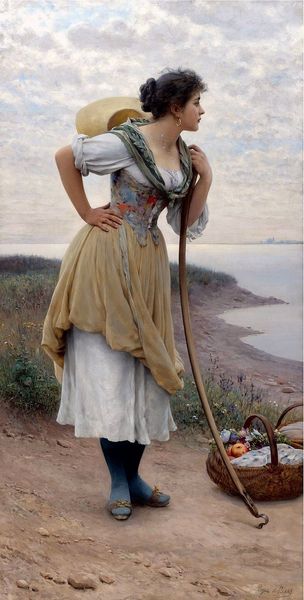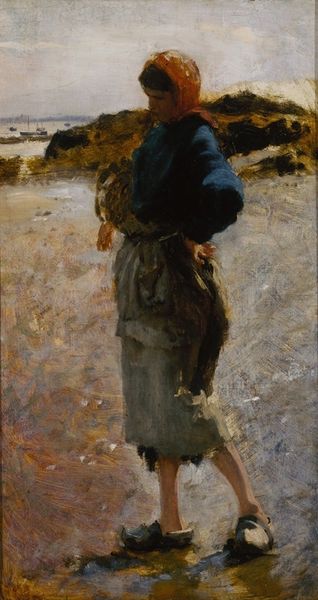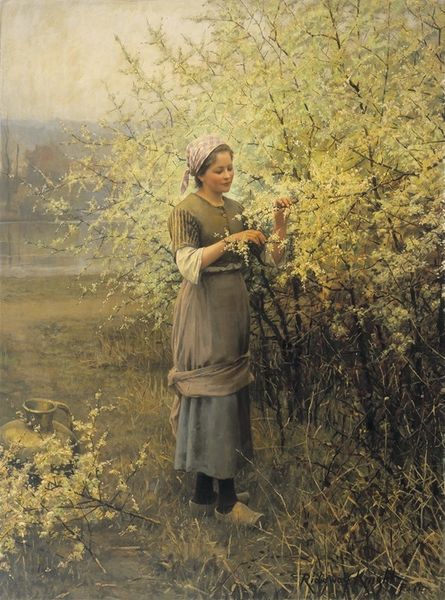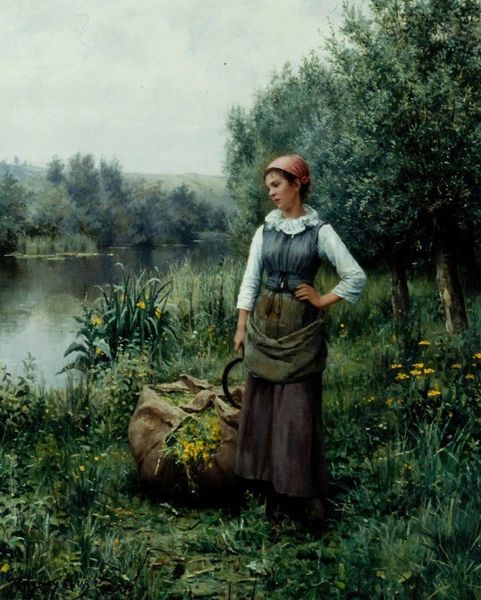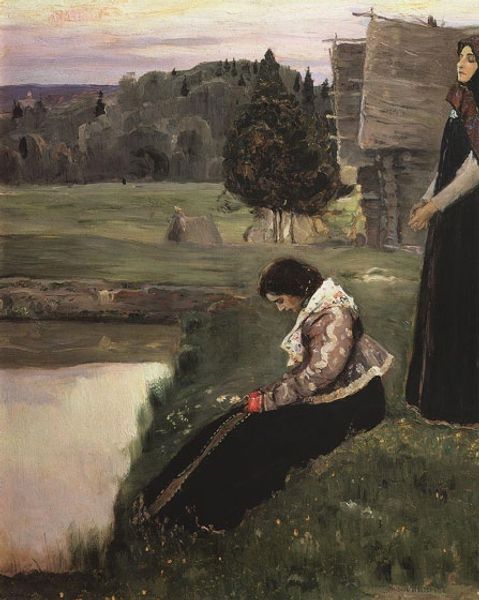
Dimensions: 112 x 144 cm
Copyright: Public domain
Editor: Here we have Charles Sprague Pearce’s “Solitude,” painted in 1889. The oil on canvas has a quiet, almost mournful quality. The figure's clothing seems to suggest a lower social class, with its very rough fabric and simple style. What are your thoughts on how the material elements contribute to the overall meaning of the work? Curator: Notice how Pearce meticulously renders the texture of her cloak and dress. These details aren’t just aesthetic; they speak to the economic realities of the depicted figure. How does the artist use material culture, such as the book she carries, to reinforce our understanding of her social standing and lived experience? Editor: That’s a fascinating point about the book. It almost seems out of place given her simple attire. Do you think its inclusion implies anything about access to knowledge or perhaps aspirations beyond her immediate circumstances? Curator: Exactly! The book could symbolize both her intellectual desires and the limited avenues available to her. Consider how the production of books in 1889 was becoming increasingly industrialized, yet access was still far from universal. This contrast highlights the social stratification inherent in knowledge consumption. Are there any clues here about class consciousness? Editor: That's a great observation about the mass production of books; the image makes me wonder, how was Pearce trying to appeal to his own wealthy audience? Were they meant to empathize, or simply to observe? Curator: That’s key. This painting might have served as a consumable item for the bourgeoisie, satisfying a romantic fascination with the rural and working classes. We should question if its melancholy and solitary feeling, rendered in oil paint for lasting display, ultimately served to distance rather than connect the viewer to her lived experiences and labour. Editor: This has given me so much to think about in terms of not just what is represented, but the means of representation itself! Curator: Indeed. Always consider how the choices of material and modes of production affect the artwork’s impact and intended audience.
Comments
No comments
Be the first to comment and join the conversation on the ultimate creative platform.
